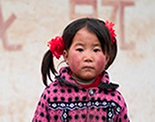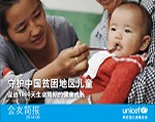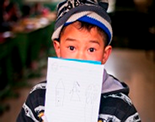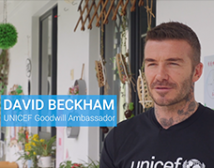By Kathryn Martin, Programme Officer at UNICEF China
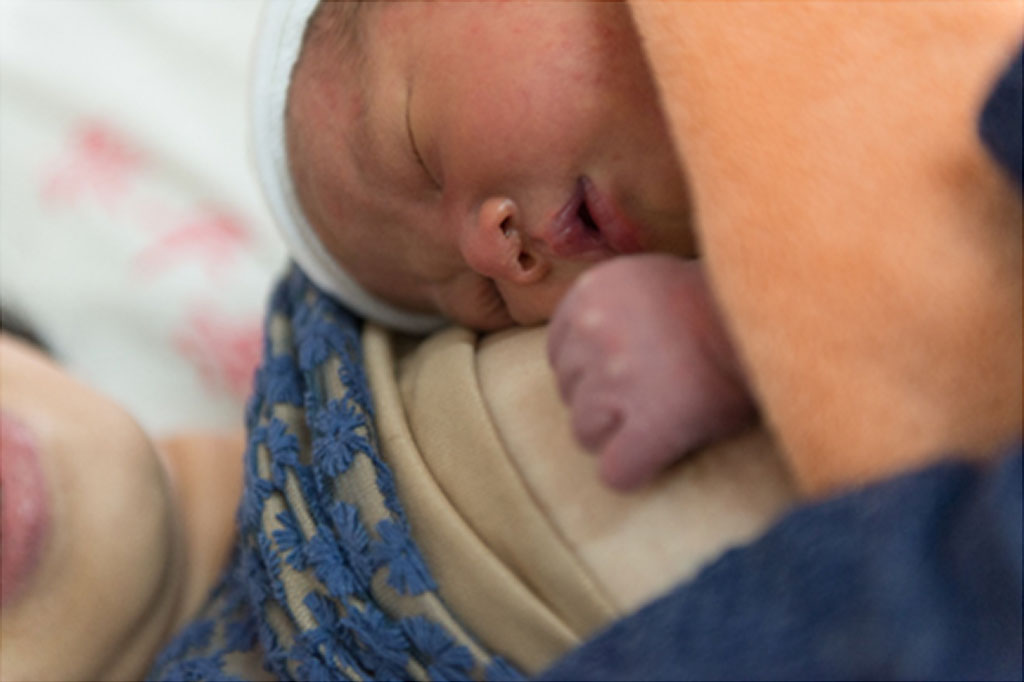 ©UNICEF/China/2013/Sun Peng ©UNICEF/China/2013/Sun Peng
A mother with her newborn baby in a hospital in Liping County, Guizhou Province, China. |
When Chun Ni (not her real name) first became pregnant, she only had one antenatal check-up because her farm in Qinghai Province was far from the nearest township. She could not afford an ultrasound and, worried about hospital costs, stayed at home to deliver. Tragically, there were complications and without proper medical facilities the baby died.
During her second pregnancy, the village doctor convinced her of the importance of five antenatal check-ups at the county hospital.“It was far, but for the health of my baby, I went for the check-ups,” Chun Ni recalls. “The village doctor went with me every time, so my husband didn't need to worry about me.And they also tested me for other diseases. I was very happy that the hospital didn't ask me to pay for all the tests.”
In 2012, Chun Ni gave birth to a healthy child in the county hospital. For the delivery, she received a government subsidy that covered the expenses. “I could not have afforded the hospital otherwise,” she says.
Chun Ni's story demonstrates the huge change in seeking health care that has occurred throughout China and that has led to significant improvements in maternal and child health outcomes. Over the last 30 years, China's health system has undergone a massive transformation. A rural primary health care system was transformed to a system that leaned heavily on more specialised and tertiary care, catering to the new urban city based populations.
However, this change created new challenges. People, especially the poorest and most vulnerable, were unable to afford the new costs for tests and procedures and families grappling with these out of pocket health expenses, were often left further impoverished. To respond to this problem, between 1998 and 2007 the Chinese government introduced different schemes to achieve universal health coverage for all Chinese citizens. These reforms sought to make services accessible to everyone and address out of pocket expenses.
A health specialist's view
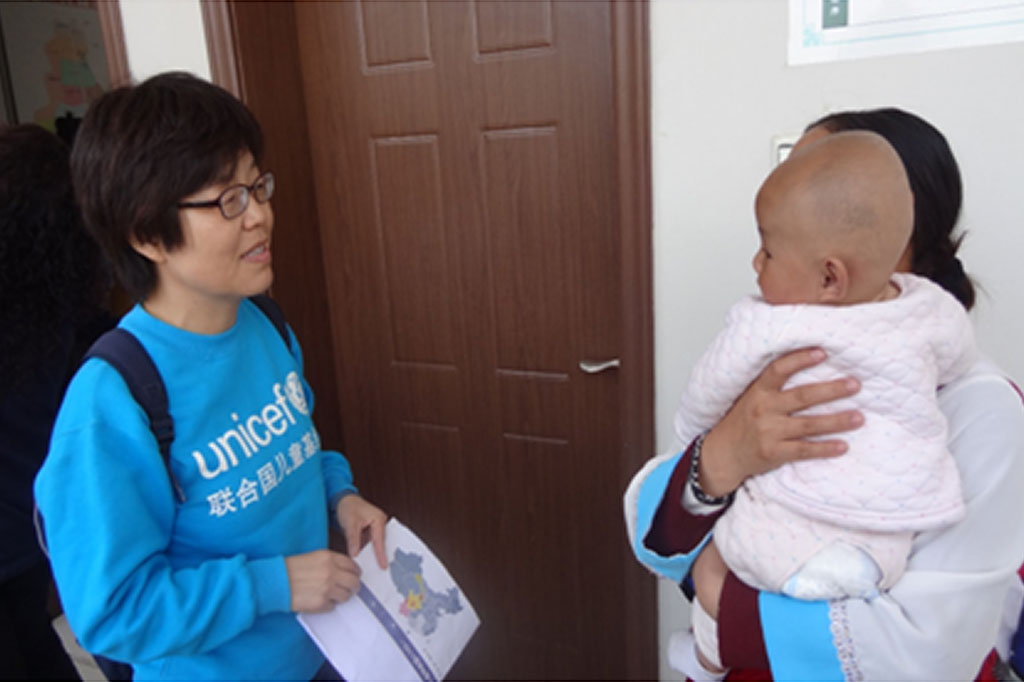 ©UNICEF/China/2014 ©UNICEF/China/2014
Dr Sufang Guo speaks to a mother with a young baby at Lijiang Maternal and Child Health Hospital, China |
Dr Sufang Guo is a maternal and child health doctor and advocate. For the past decade, she has worked for UNICEF in China and South Asia. “Since the early 1980s,China's rural health services have undergone many changes,” she says. “These include decreased reliance on state funding, decentralized public health services, improved autonomy of health facilities, increased freedom of movement for health workers and decreased regulatory control.
“These changes are associated with growing inequalities in access to health services, increasing cost of medical care and deteriorating preventive programmes in poor areas. The increased costs eventually resulted in out-of-pocket payments becoming more than half the cost of care received. This was unacceptable. Most people could not afford health services.
“Through the Maternal Mortality Reduction and Tetanus Elimination Project, which targeted remote and poverty-stricken areas, the government promoted hospital delivery as a universal standard and provided subsidies to women who delivered their babies at hospitals. This project was expanded until all rural areas were reached in 2009.
“Recognizing this, the government prioritized health care access and funding for remote rural areas. This led to the founding of the New Rural Cooperative Medical Care System in 2003. The scheme dramatically increasedinsurance coverage for rural populationswith both government funding and individual contributions. These two factors greatly contributed to near-universal health coverage for some 600million farmers. It also brought down the out-of-pocket payments to around 30 per cent.
“Thanks to the government's great effort, 98 per cent of China's rural population is now insured – it was only 75 per cent in 2005. This great leap in ensuring universal health insurance and the government's project of providing subsidies for rural women who deliver their baby in health facilities enabled the institutional delivery rate to reach 99 per cent nationally. However it was not known whether all groups of people benefitted equally.
“To improve the universal health insurance coverage for children, UNICEF began promoting age-disaggregated data analysis, which was not previously being done. Without age-disaggregated data, the true situation of newborns, children and adolescent health can be blurred. We found that the younger the child, the lower the health insurance coverage and the higher the out-of-pocket expenditure. This was really unacceptable, especially because the youngest children are those at highest risk of mortality.
“Once we obtained the insurance coverage and out-of-pocket payment data, disaggregated by age for Chinese children, we detailed the situation and ideas for improvement and requested the government to consider universal health coverage for children. After consideration, the government worked to promote policies which automatically enrolled newborns born to insured mothers into the rural cooperative medical scheme.”
South-south cooperation
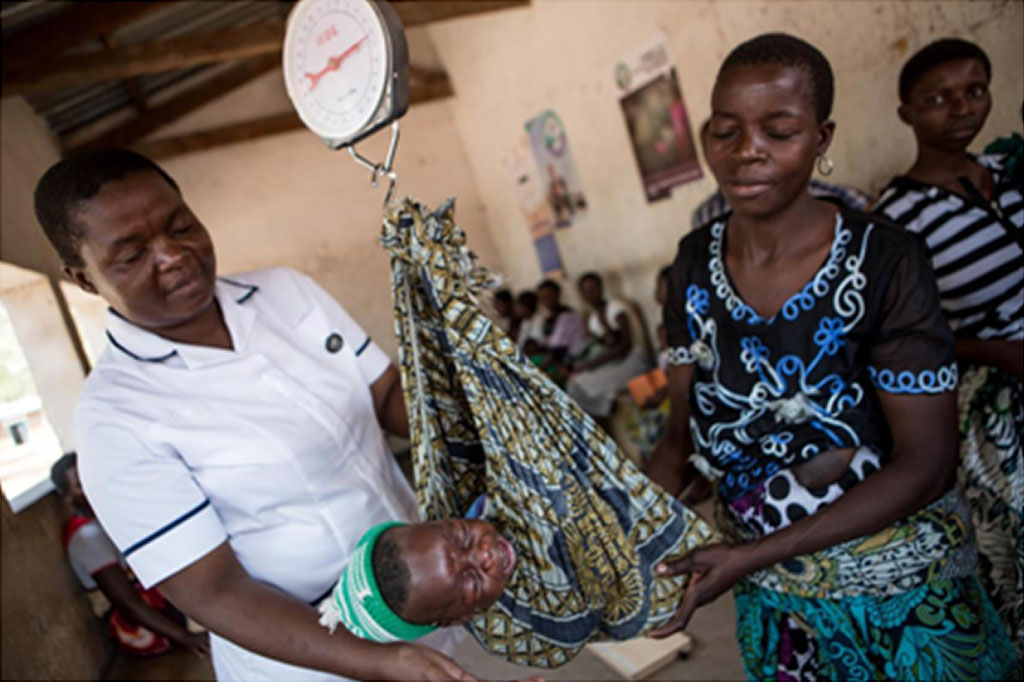 ©UNICEF/UNI173468/Schermbrucker ©UNICEF/UNI173468/Schermbrucker
A baby is weighed at Ngabu Clinic in Malawi. “We want to see happy mothers, happy families and happy babies,” says Head Nurse Beatrice Chigamba. |
As a regional leader in providing universal health care, China has shared learning with other countries looking to expand health coverage, particularly in Africa. UNICEF has helped to facilitate this collaboration and has been working with both China and African nations, such as Ethiopia, Kenya, Nigeria, Sierra Leone and Zimbabwe to advocate for improved maternal and child health outcomes.
China signalled its commitment to make progress on maternal and child health in Africa by signing the Cape Town Declaration in October 2015. The Chinese government aimed to use its lessons learned and achievements from its path to universal health coverage, in order to enable the same health improvements for the women and children in Africa.
“As a native of China, and after having worked with thirty beautiful African countries, I've seen how China could really complement the effort of African government and partners for the development of Africa,” UNICEF Principal Health Adviser Dr Luwei Pearson said at the time.
At the 2015 China-Africa Summit, Chinese President Xi Jinping announced a new package of funding for Africa totaling $60 billion USD for 2016 to 18. This funding includes, for the first time, a commitment to “address major causes for preventable maternal, new-born and child mortality,” and “special programs focusing on women and children”.
In March 2016, UNICEF and the Chinese government held an international conference on child health development in Beijing. This helped deepen cooperation between China and African countries on child health development.
Also in 2016, representatives of Ministries of Health, Planning and UNICEF officials from eight African nations met with Chinese Health and Commerce Ministries. They gathered to plan for and seek measurable results from the Chinese government's ‘100 Maternal and Child Health Care Projects' initiative. China has committed funds to enable the establishment of 100 hospitals and clinics to improve maternal and child health outcomes in developing countries around the world.
Lessons learned
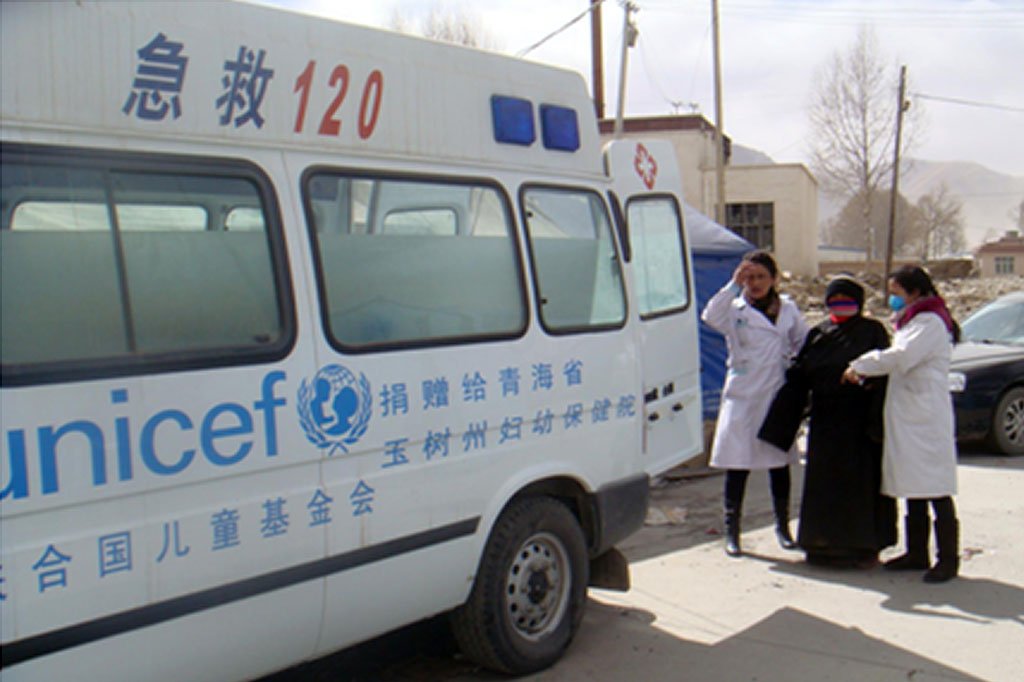 ©Yushu Prefecture Maternal and Child Health Hospital/2012 ©Yushu Prefecture Maternal and Child Health Hospital/2012
A pregnant womanwith complications is helped into an ambulancein Qinghai Province, China |
Progress in China can also provide a model and lessons to benefit other countries in the Asia-Pacific region. China's success in reducing maternal and newborn mortality primarily rests on three pillars. First, hospital delivery was promoted as the standard of care. Second, financial support was provided through targeted subsidies that allowed pregnant women to do that. Third, health insurance targeting costs such as hospital delivery was systematically rolled out.
Similar approaches, applied to other aspects of maternal and child health, can help the world meet the UN Sustainable Development Goal 3, which aims to ensure healthy lives and promote well-being for everyone. If we can achieve this, then Chun Ni's experience with her second pregnancy will become common practice in China and around the world.















